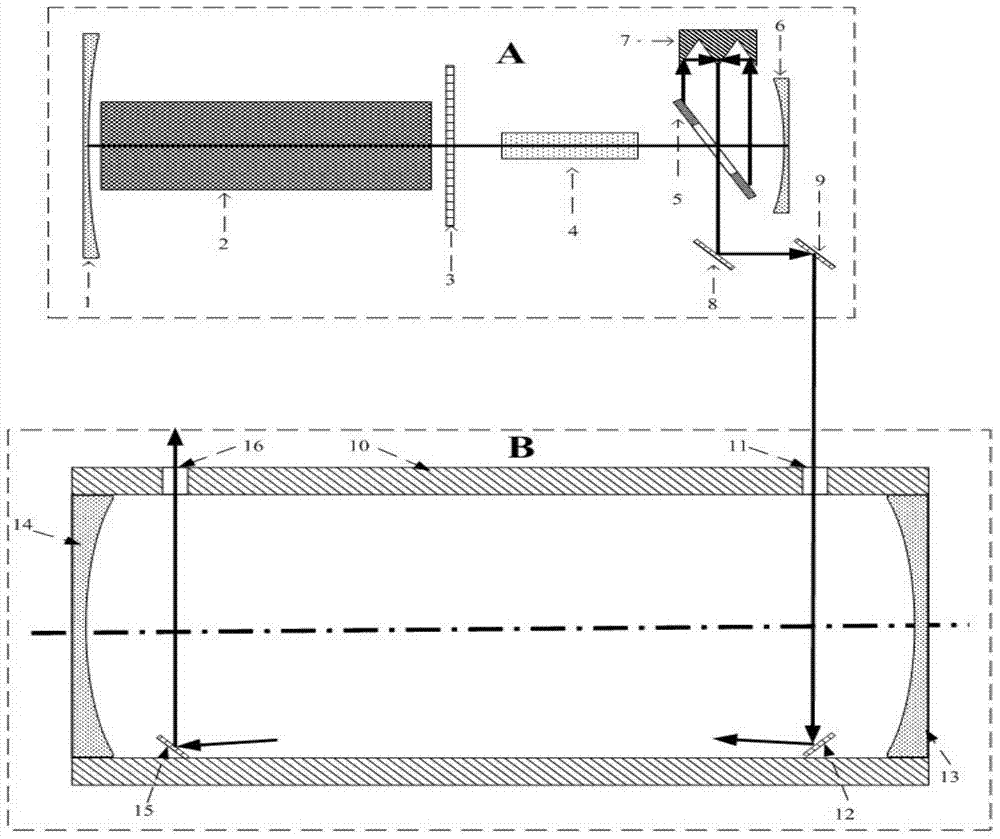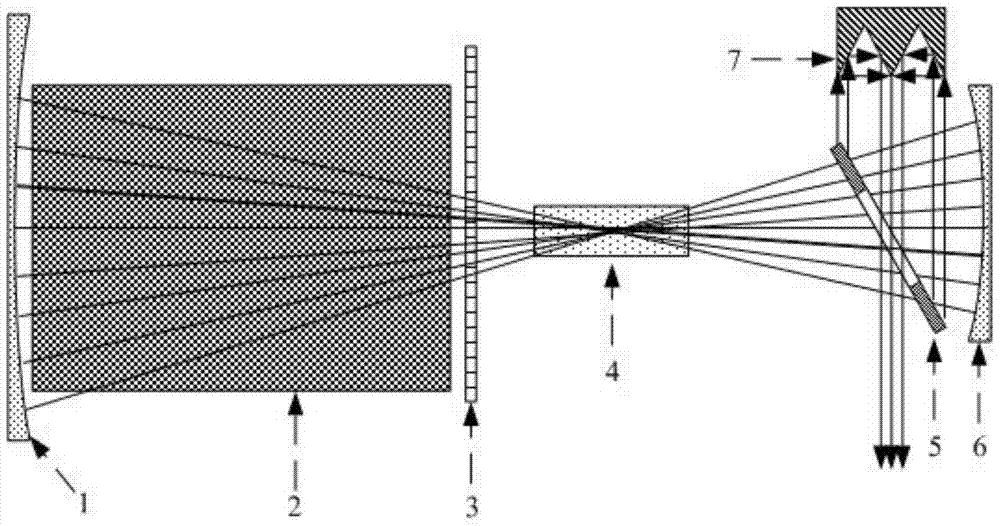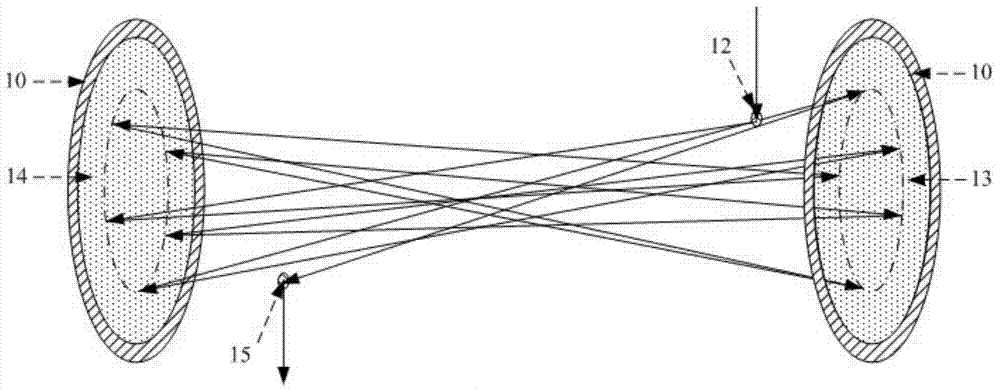A high-order Stokes light generating device
A generation device and high-level technology, applied in the field of high-order Stokes light generation devices, can solve the problem of low Raman conversion efficiency, difficulty in obtaining high-order Stokes light output, effective laser and Raman media Problems such as short working area
- Summary
- Abstract
- Description
- Claims
- Application Information
AI Technical Summary
Problems solved by technology
Method used
Image
Examples
Embodiment 1
[0025] Using methane (2917.6cm -1 ) as the Raman medium, and Nd:YAG as the fundamental frequency laser medium to achieve the second-order Stokes light output at 2806.4nm.
[0026] In this embodiment, methane is used as the Raman medium, which is filled into the Raman cell and the multipass cell in the confocal unstable cavity, Nd:YAG is used as the fundamental frequency laser medium, and pulsed. The pressure of methane in the Raman cell and the multi-pass cell in the laser cavity is 10atm, the focal lengths of the cavity mirrors at both ends of the confocal unstable cavity are 66cm and 60cm, and the diameters are 30cm; the cavity length is 126cm, and the scraper mirror The efficiency of extracting laser light is about 10%. The length of the Raman cell in the cavity is 10cm, and the window aperture size of the Raman cell is 10cm, and the windows are Brewster windows. The output light of the confocal unstable cavity includes 1064nm fundamental frequency laser and 1543nm first-...
Embodiment 2
[0028] Using nitrogen (2330cm -1 ) as a Raman medium to achieve 2110nm Raman laser output.
[0029] In this embodiment, nitrogen gas is used as the Raman medium, which is filled into the Raman cell and the multi-pass cell in the confocal unstable cavity, and Nd:YAG is used as the fundamental frequency laser medium for pulse operation. The nitrogen pressure in the Raman cell and the multi-pass cell are both 10atm. The focal lengths of the cavity mirrors at both ends of the confocal unstable cavity are 66cm and 60cm, the diameter is 30cm, and the cavity length is 126cm. The efficiency of each laser extraction by the scraper mirror is about 10%. The output light of the confocal unstable cavity includes 1064nm fundamental frequency laser and 1414.8nm first-order Stokes laser (S 1 ), and they basically coincide in space. The radius of curvature R of the two-cavity mirror of the multi-pass cell 1 = R 2 = 100cm; the distance between the two mirrors of the multi-pass cell, that i...
PUM
 Login to View More
Login to View More Abstract
Description
Claims
Application Information
 Login to View More
Login to View More - R&D
- Intellectual Property
- Life Sciences
- Materials
- Tech Scout
- Unparalleled Data Quality
- Higher Quality Content
- 60% Fewer Hallucinations
Browse by: Latest US Patents, China's latest patents, Technical Efficacy Thesaurus, Application Domain, Technology Topic, Popular Technical Reports.
© 2025 PatSnap. All rights reserved.Legal|Privacy policy|Modern Slavery Act Transparency Statement|Sitemap|About US| Contact US: help@patsnap.com



